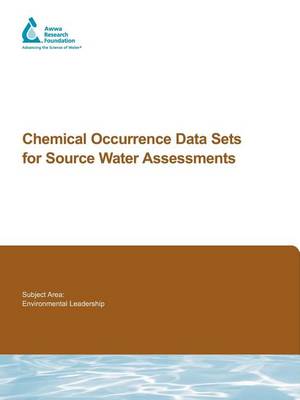Water Research Foundation Report
2 total works
Total Maximum Daily Loads and Drinking Water Utilities
by Jeffrey S. Rosen, Jose A. H. Sobrinho, Paul L. Freedman, and W. Larson
Published 31 May 2006
Total Maximum Daily Loads (TMDLs) are required under Section 303(d) of the CWA for water bodies that do not attain water quality standards after technology-based pollution control requirements are applied. While this provision has existed in the CWA since 1972, it was brought to the forefront through a series of citizen suits in the 1980s and 1990s which required states and United States Environmental Protection Agency (USEPA) to list water bodies not attaining water quality standards (so-called 303(d)-listed water bodies), and develop maximum loadings as necessary to meet water quality objectives. In many cases, aggressive schedules for development of TMDLs for those water bodies were also required. AwwaRF and Water Environment Research Foundation sponsored an experts workshop bringing together regulators, water and wastewater utilities, and other stakeholders to explore the links between the ?clean water? and ?safe water? communities represented by the Clean Water Act (CWA) and the Safe Drinking Water Act. The objectives of the workshop were to: 1. identify gaps in current knowledge of the Total Maximum Daily Load (TMDL) program, 2. identify benefits and impacts to utilities of the TMDL program, 3. open communication between regulating agencies and utilities, and 4. identify future TMDL information and research needs. A two-day workshop was convened and attended by experts from state and federal regulatory agencies, water and wastewater industries, regional authorities, and nonprofit and non-government agencies. The workshop was held at the River Club in Scituate, Mass., on December 11-12, 2003. A short cost and benefit analysis was accomplished following the workshop. A major objective of the project was to define the issues related to the TMDL rules and processes from the perspective of a water utility. The issues were consolidated into six overarching topics including (1) data and analysis, (2) water quality standards versus maximum contaminant levels, (3) implementation of controls, (4) interagency relationships, (5) public outreach, and (6) watershed comprehensive planning. The study also identified benefits of utility involvement in the TMDL process that included reduced public health risks, reduced treatment requirement and costs, appropriate control measures, good public relations, and other benefits. Perhaps the most important finding was the determination that drinking water utility participation in the TMDL process is extremely important and that any negative consequences would occur with or without utility participation. The results of this research project have numerous practical benefits to the drinking water community. This study presents important information about the TMDL regulations and the relationships of TMDLs to SDWA regulations. The material developed can help guide drinking water utilities into both the liabilities presented by the TMDL requirements and the way TMDLs can be used as part of a source water protection program. This research also identified benefits and risks to water utilities from the establishment of TMDLs and future TMDL research needs that will support the drinking water utilities.
Chemical Occurrence Data Sets for Source Water Assessments
by Kristyn B. Stevens, Jose A. H. Sobrinho, Jeffrey S. Rosen, and Christopher Crockett
Published 1 January 2004
This research project aims to identify, list, and characterize chemical occurrence databases and data sets that can be used by states and utilities to perform source water assessments. The data sets were inventoried and reviewed based on a variety of descriptors (metadata). Amendments to the Safe Drinking Water Act (SDWA) require all US states to establish Source Water Assessment Programs (SWAPs). This includes the submission of a plan to the USEPA detailing how the states will delineate source water assessment areas, inventory significant contaminants in these areas, and determine the susceptibility of each public water supply to contamination. The collection of existing data on chemical occurrence is one tool to help determine potential contaminants and perform susceptibility analyses for surface and groundwater. This project includes a review of available, relevant source water data sets (e.g., surface water and groundwater) that document chemical occurrence in an effort to develop a comprehensive data inventory to serve as a central resource when performing SWAPs. Data sources queried to accomplish this task included national databases and data sets available through regional and state agencies, water utilities, and volunteer groups. The majority of databases and data sets included in this research project were identified as a result of the participation and cooperation of local and state agencies. The project team also identified national data sets and some state and volunteer groups? data sets through online research. The product of this research has extensive application to the drinking water and regulatory communities for assessing source waters, enriching the ability to assemble and evaluate all existing and readily available water quality-related data and information. Specifically, this project documented chemical data stored in a variety of databases and provided a mechanism to access it and the associated metadata. The online tool, Source Water Quality Database, provides information on water quality data related to chemical occurrence stored in national, regional, and state data sets. Originally published by AwwaRF for its subscribers in 2003 This publication can be purchased and downloaded via Pay Per View on Water Intelligence Online - click on the Pay Per View icon below

